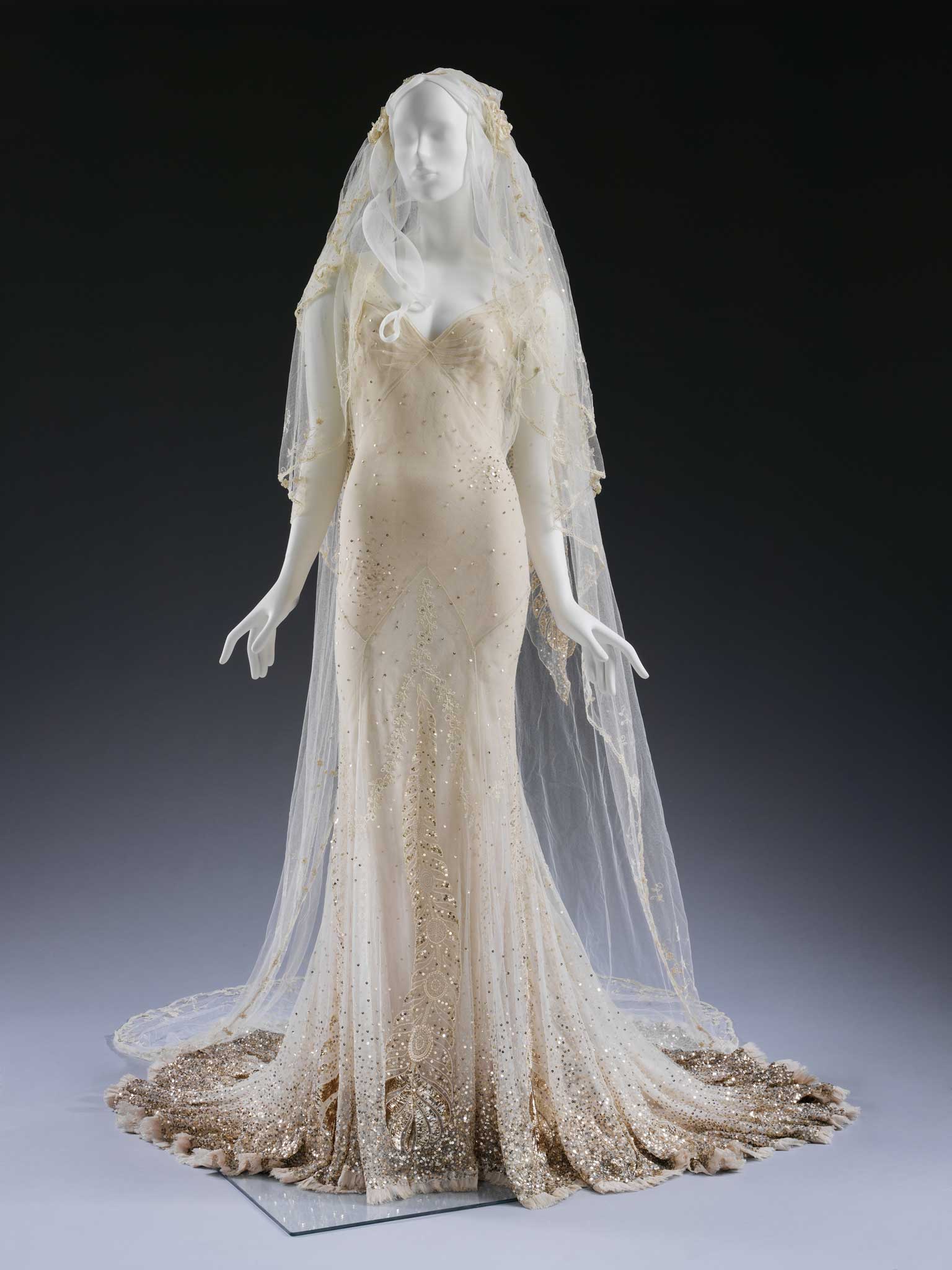Anatomy of a wedding dress: The Great Gatsby by John Galliano for Kate Moss's 2011 wedding
The dress will takes centre stage at the V&A's new show Wedding Dresses

The cut
Kate Moss harked back to the sinuous silhouette of the Thirties – unusual today, given that the taste for eschewing fashion and opting for historicism in wedding gowns began back in the Sixties. That decade's A-line minis, synonymous as they were with sexual liberation, made odd bedfellows with the fuddy-duddy perception of marriage.
The embellishment
Kate Moss's gown is embellished with golden paillette embroidery, a delicate couture touch reminiscent of John Galliano's work as head of Christian Dior, where Moss was a frequent model. They also serve a technical purpose, to weight the fragile fabric against Moss's body.
The veil
A hyper-traditional touch – Roman brides sported veils as protection from evil spirits, while in modern Western practice, it became indicative of modesty and chastity. Moss's all-enveloping but closely-fitted lace veil harks back to the slender styles of the Twenties and Thirties.
The colour
White wedding gowns were once the exception, rather than the rule – Mary Queen of Scots was dubbed La Reine Blanche after her decision to marry in the colour, then indicative of mourning at the French court. Indeed, white gowns were only popularised by Queen Victoria's marriage to Prince Albert in 1840, when the colour was chosen to showcase prized lace. Other brides leapt to copy her, in what was arguably the first 'celebrity' wedding gown.
Wedding Dresses 1775-2014 is at the V&A, London SW7, until March 2015
Join our commenting forum
Join thought-provoking conversations, follow other Independent readers and see their replies
Comments